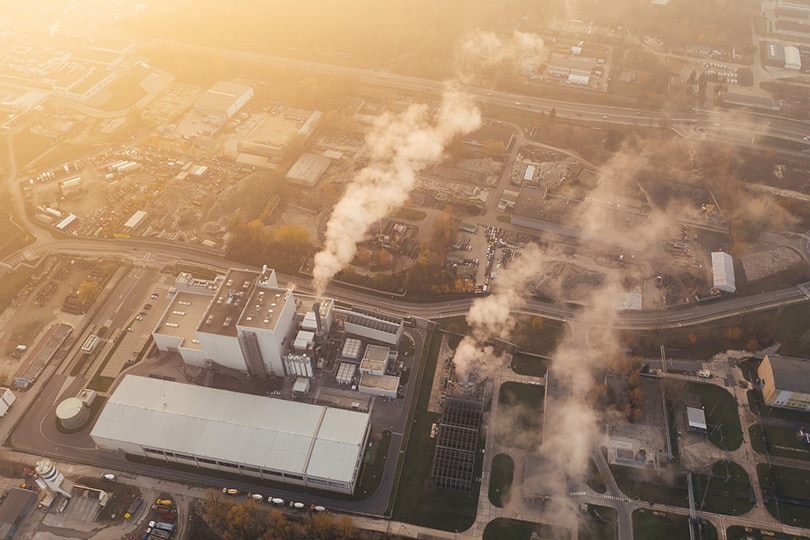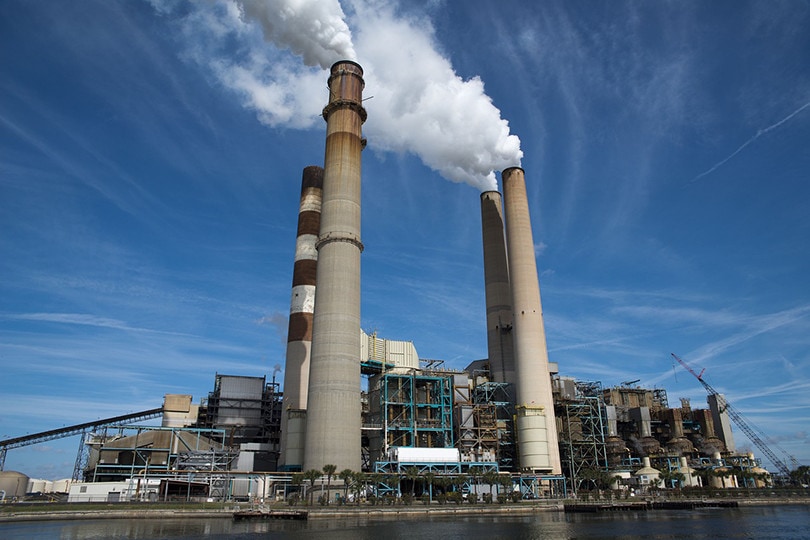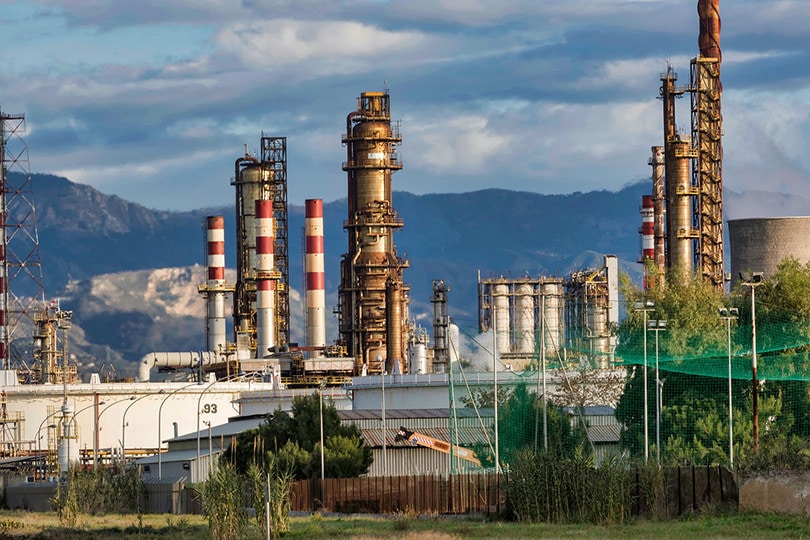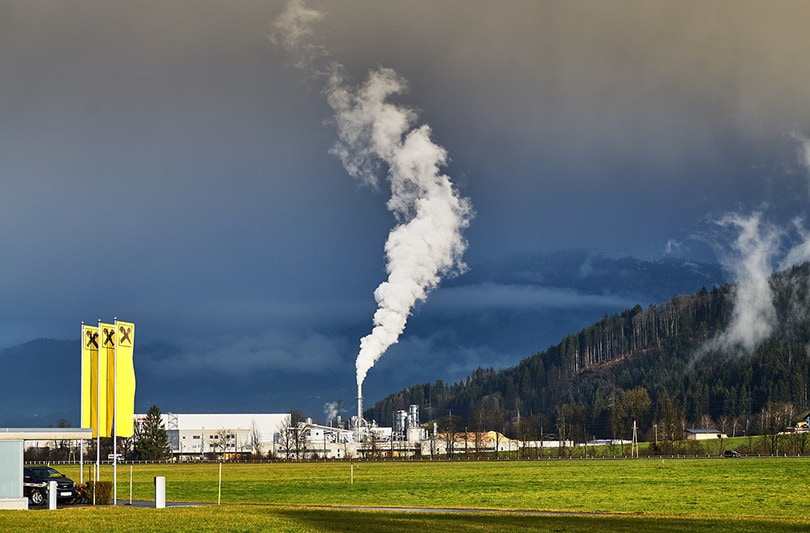What is Carbon Capture? Can it Prevent Climate Change?
-

- Last updated:

Carbon dioxide is a natural element of the Earth’s atmosphere, but too much of it can have a harmful effect on the environment. The planet warms when the atmosphere contains too much carbon dioxide, resulting in climate change. Human activity has increased the amount of carbon dioxide in the atmosphere by 50%1 in less than 200 years.
Everyone can contribute in some way to decreasing climate change, from the way you choose to travel, the food you eat, and the way you shop. Large-scale commercial industries that emit tons of carbon dioxide during production are now jumping on board and playing their part with the technology known as carbon capture. Carbon capture is one of the most practical solutions for combating the reduction of CO2 in the atmosphere. Carbon capture is a range of technologies that reduce carbon emissions in the air.
In this article, we’ll explain what carbon capture is, what you should know about how it works, and its benefits and drawbacks.
What is Carbon Capture?
It is the process of capturing the carbon dioxide that already pollutes the air and injecting it underground to prevent further harm to our environment. Not only can carbon dioxide be captured, but it can be intercepted before it reaches the atmosphere, making it a climate change solution that sounds promising.
The first success of carbon capturing took place in the Sharon Ridge oil field in Texas in 1972. It marked the beginning of success for carbon-capturing technology as it proved the possibility of removing carbon emissions from the atmosphere. This technology has grown more popular and feasible in 2022, with 43 large-scale carbon capture and storage systems operating worldwide.

How Does Carbon Capture Work?
Carbon capturing can be done in three steps based on capture, transport, and storage principles.
Capture
The first step is to capture carbon emissions that already exist in the atmosphere using carbon-capturing technologies. The capture system is much like a giant vacuum cleaner that cleans the air by sucking up all the pollution.
Most capture systems will remove carbon emissions from the source before they can make their way to the atmosphere. The cO2 emitted from processing and burning fossil fuels is captured and absorbed by liquid solvents. It is then separated from the solvent, compressed, and liquified to transport it.
Transport
The captured carbon emissions are then pumped through a pipeline from its capture point to the facility where they will be stored or used.
Storage and Utilization
The carbon emissions are stored underground, usually in old oil or gas reservoirs. The captured carbon can also be reused to make fuel, concrete, and soap.
Where Are Carbon Capture Plants Located?
As of 2018, the world had 18 large-scale commercial facilities in operation, five under construction, and 20 in various stages of development.
According to the Global CCS Institute, 12 carbon capture and storage projects are currently operational in the United States, primarily in the natural gas processing and ethanol production industries. Several natural gas and coal-fired power plant owners have announced new projects in recent years, but none are currently operational.
Four are located in Canada.
- Boundary Dam: A coal-fired power plant operated by SaskPower
- Weyburn: It captures CO2 from coal gasification and power plant in North Dakota and transports it via pipeline to the Weyburn oilfield in Saskatchewan
- Quest: An oilsands project operated by Shell
- The Alberta Carbon Trunk Line: It captures emissions from the Redwater Fertilizer factory and the Northwest Redwater refinery, where it is transported to aging oil reservoirs in central and southern Alberta

Advantages of Carbon Capture
Carbon capture and storage is one of the most effective methods of permanently removing carbon emissions from the atmosphere. It can boost the power generated by carbon dioxide-based steam cycles by forcing carbon dioxide through a supercritical fluid, which can transfer heat more efficiently while using less energy to condense the steam.
The captured carbon dioxide is incorporated into concrete to fortify it and increase the durability of the infrastructure. Carbon capture operations also require skilled engineers and technicians to operate them, and this creates job opportunities. Carbon capture has numerous economic, social, and environmental benefits.
Disadvantages of Carbon Capture
The methods and technologies required for carbon capture have some financial impact. Concerns have also been raised about the safety of storing large amounts of carbon dioxide due to the possibility of leaks and environmental contamination. Leakage can also occur because of earthquakes or war damage.
The captured carbon only accounts for 25% of greenhouse gas emissions, with 60% coming from other industrial activities such as transportation and agriculture. These carbon dioxide emissions are not currently being captured. For each ton of carbon dioxide buried, 25 tons of water will be required, and that’s a lot of water!
Frequently Asked Questions (FAQs)
Can Carbon Capture Prevent Climate Change?
While carbon capture technologies are an amazing way to treat the negative environmental impact of industrialization habits, it is still limited. It can reduce carbon emissions which is an excellent asset for any company that wants to minimize its carbon footprint. Still, it cannot prevent climate change or reverse the damage already occurring.
What Is the Difference Between Carbon Capture and Carbon Sequestration?
Carbon capture typically refers to the process of collecting carbon from industrial sources that generate high levels of greenhouse gas emissions. In contrast, carbon sequestration relates only to the long-term storage of that captured carbon dioxide.

How Much Carbon Can Be Captured?
According to the International Energy Agency, more than 30 megatons of CO2 are captured each year globally, with North America accounting for 70% of this total. The IEA predicts that carbon capture will reach 2,300 megatons per year by 2040, accounting for 7% of global emissions reductions.
Is Storing Carbon Safe?
The Global CCS Institute describes CCS as “a proven technology that has been in safe operation for over 45 years.” It continues, “all components of CCS are proven technologies that have been used on a commercial scale for decades.”
Is Carbon Capturing Cost-Effective?
This technology is a mix of hope and skepticism, but while its high costs may raise eyebrows, market trends and future projections indicate a healthy interest in moving forward. Carbon capture technologies can be expensive, but a global consultancy film predicts a 20% price reduction by 2050.

Why Is There So Little Carbon Captured, Stored, and Used?
The main issue is that carbon capture is costly compared to other climate change solutions, such as tree planting, green energy, and energy efficiency.
Conclusion
No matter how strongly we advocate for their replacement with sustainable energy, fossil fuels will not evaporate overnight, but every bit helps, whether it’s on a large or small scale. Carbon-capturing technologies can handle these harmful emissions by decreasing large amounts of carbon dioxide from various sources. Furthermore, one of the most important advantages of utilizing carbon capture technologies is the awareness to use fossil fuels more responsibly.
While these technologies are groundbreaking, they require large amounts of equipment to work successfully, which makes it a costly system that utilizes a lot of energy. Drawbacks are part of the process, and once the system is fine-tuned and progress is made, carbon capture can be revolutionary for climate change.
- See also: 11 Car Pollution Statistics in Canada
Featured Image Credit: Jonathan Borba, Unsplash
Contents

